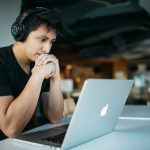Forex Trading for Beginners
Every day, volumes reaching 5 trillion US dollars circulate on the currency market. The global exchange brings profit to banks, hedge funds, and large businesses. However, this money-making source is also open to individuals. In the UK and other countries, traders get sizeable returns from buying and selling world currencies. Here is an overview to help you get started.
Historical Perspective in Brief
Currencies have been exchanged for centuries. Travellers and merchants engaged in the activity to pay for goods and services from abroad. An organized marketplace focused on exchange did not exist until the sixteenth century. Today, tourists from the UK need to sell their British pounds for other currencies.
Initially, the marketplace only welcomed institutions that bought and sold massive volumes. Today, it is the activity of these players that accounts for the biggest share of transactions. Since the 1990s, individuals have been allowed to join the trading. With the emergence of digital tools like MetaTrader 4, the exchange has become accessible to practically every internet user.
The Nature Of Rates
The values of different currencies are never static. They move up or down, swayed by a multitude of factors. For instance, Brexit has caused GBP to depreciate, and every significant drop in the price of crude oil sends the Russian rouble tumbling down.
From wars to oil reserve shortages to domestic policies, keeping track of such changes is no easy task. Luckily, Forex trading software is packed with various analytical tools that facilitate forecasting. To succeed, a trader does not need to be a finance genius.
Credible brokers, such as FXTM, provide ample educational content and guidance at every step of the way. Forex VPS ensures the security and stability of the trading systems. Although the complex nature of rate fluctuations may be daunting, you can learn to trade profitably. Time and practice are key.
How Profit is Made
Modern platforms allow you to exchange currencies, stocks, commodities and trading CFDs (contracts for difference). Newcomers to Forex start with the basics of currency trades. Here are the primary aspects to learn.
First, all currencies are sold or bought in pairs. For illustration, take the EUR/USD combination. The value (e.g., 1.09) shows the price of the base currency (the Euro) in the quote (counter) currency (the US dollar). In this example, a Euro is worth 1 dollar 9 cents. However, there is more than one price to consider.
Each pair (this may be “major”, “cross” or “exotic”) has its Bid and Ask values. These are correlated and apply to selling and buying of currency, respectively. For the EUR/USD pair, the possible price for a buyer (Ask) could be 1.0664, while the seller could get 1.0661 (Bid). The Ask value is always a little higher than Bid.
The third crucial aspect is the “spread”. It is the difference between the two correlated prices (0.0003 in the example). In essence, this constitutes the commission paid to the broker as an intermediary. It also affects traders profits or losses. The 0.0003 value must be read as “three-pip spread”, as each 0.0001 is known as “pip”.
Where to Start
Begin by choosing a broker. This company will not only register your trader account. All money transfers and withdrawals will also be done through them. Look at well-established brands and search for genuine client feedback. The company must be licenced to conduct business in the United Kingdom.
Take time to study tutorials supplied by the broker and explore the functions of your platform. The software may be downloaded online, and login details will be generated by the intermediary. Allocate time for practice in the risk-free mode (through a demo account) before moving on to the live trading.





